In hindsight, Jaeger-LeCoultre came to Watches & Wonders this year with an incredibly impressive slate of new watches. Chief among them was the truly wild Duometre Heliotourbillon Perpetual featuring the brand’s first triple axis tourbillon. This wasn’t the only new Duometre, however. A new collection of Duometre Chronograph references was also released, housing a new caliber that pushes the concept a bit further than it has in the past. Like the original released in 2007, the new watches feature a chronograph complication, though the new 391 caliber welcomes the phases of the moon and a day/night indication to the mix. At its core, however, the Duometre feature remains as compelling as ever.
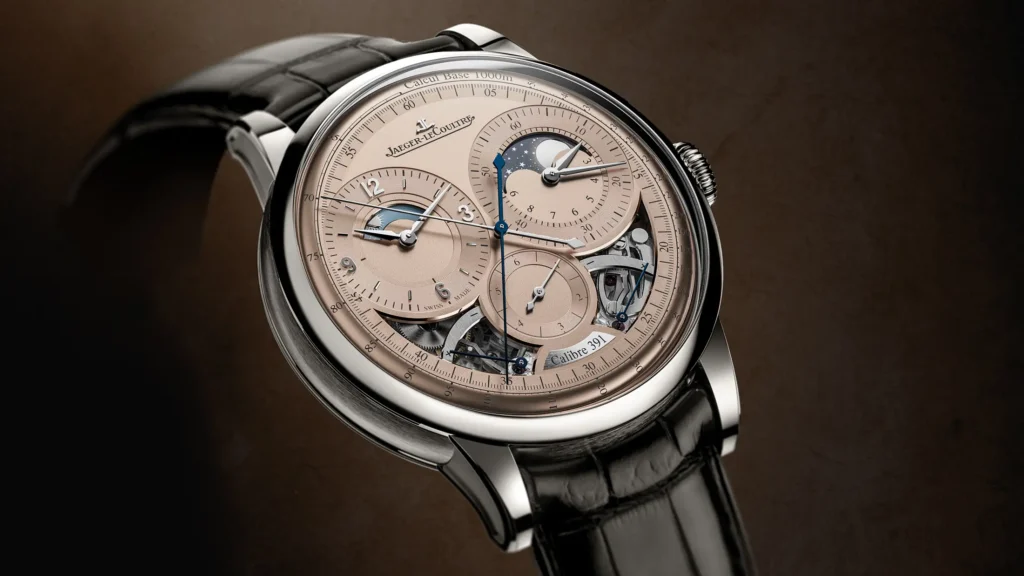
The Duometre concept begins with the acknowledgement precise timekeeping demands that the power supply from the movement’s barrel to the escapement be absolutely steady. The addition of complications which draw from the same source of power interrupts that steady flow, thus jeopardizing precision. To address this, the Duometre makes use of two mainspring barrels and two gear trains linked to a single regulating organ. One barrel and gear train regulating the core timekeeping function, while the other powers the complication, in this case, a chronograph with phases of the moon. This guarantees that the movement’s isochronism will remain uncompromised by the operation of any complication.
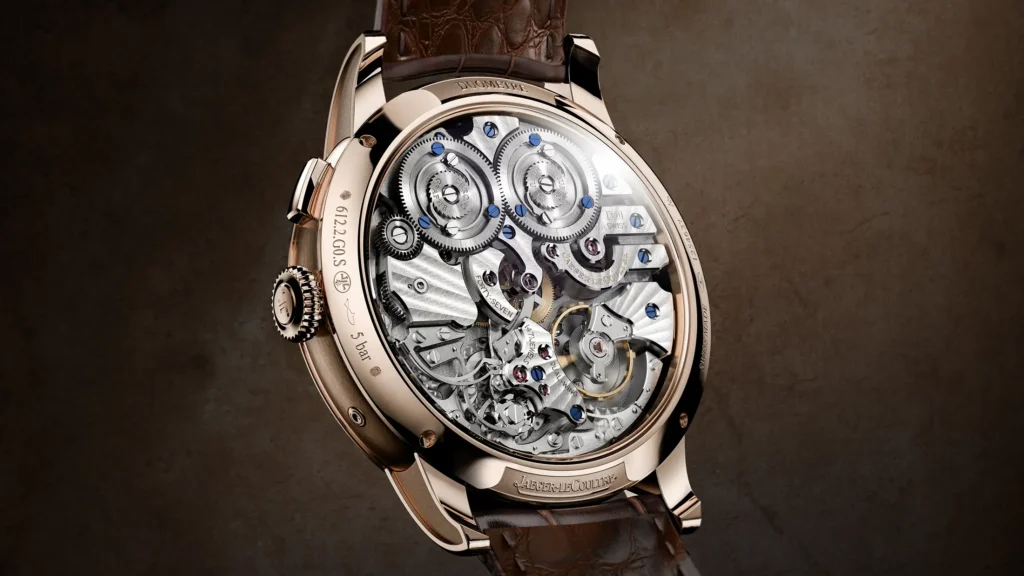
The Duometre family has welcomed a variety of executions and complications since its release in 2007, including welcoming the Spherotourbillon, and just this year, the Heliotourbillon, but there’s something special about the way a chronograph aligns with the Duometre as a concept. In this latest execution, the watch adopts the brand’s recent design language by opening the two cavities at the bottom of the dial around the power reserve indications for each barrel, framing the seconde foudroyante (flying second) display.
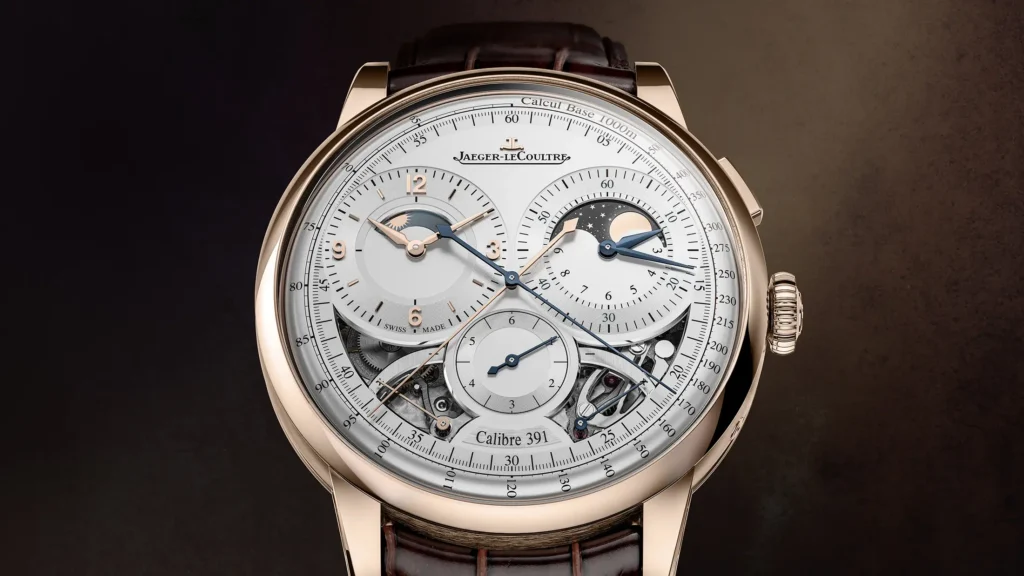
When the chronograph is activated that foudroyante hand kicks into action, making a complete rotation of its dial in 1 second in 6 beats. When timing is stopped, the results can be read down to 1/6th of a second. It’s worth noting that there is a regular timing seconds as well that is activated along with the chronograph, working alongside the hour and minute totalizers. Each of the barrels provides 50 hours of reserve (each getting its own reserve display), meaning the chronograph could theoretically run for that long, though the hour totalizer contains 12 hours. The moon phase aperture is set within the hour and minute totalizer, and features a beautiful depiction of the moon and surrounding stars.
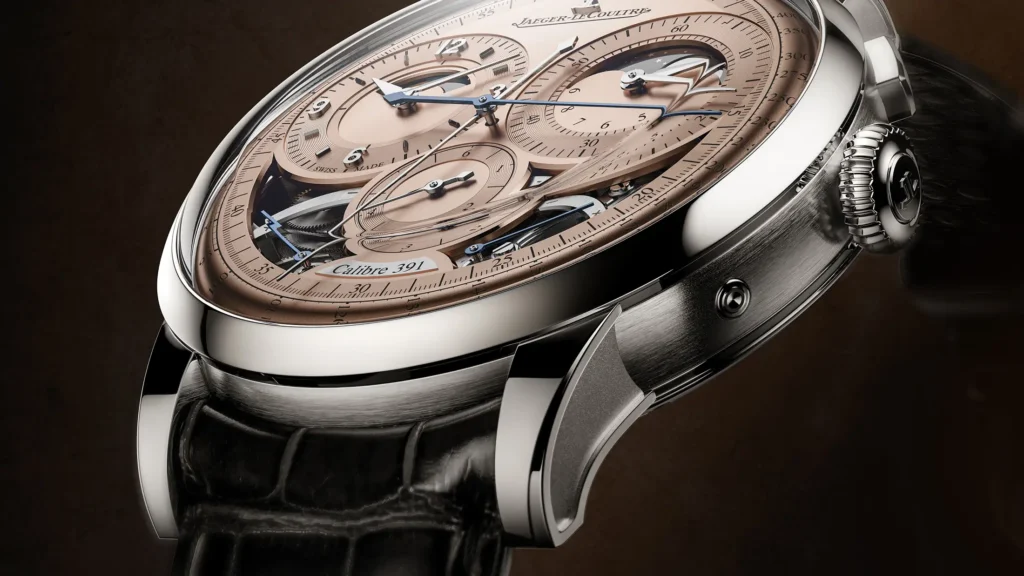
The hour and minutes are displayed in a sub dial at the left, with Arabic numerals marking the cardinal positions. This sub dial also hosts a day/night indication in the form of a rising and setting sun. The silver opaline dial (presented in a pink gold case) uses dark blue handsets to differentiate the timing elements from the timekeeping elements, while the copper dial presented in a platinum case makes use of a unified handset, looking a bit more formal in the process.
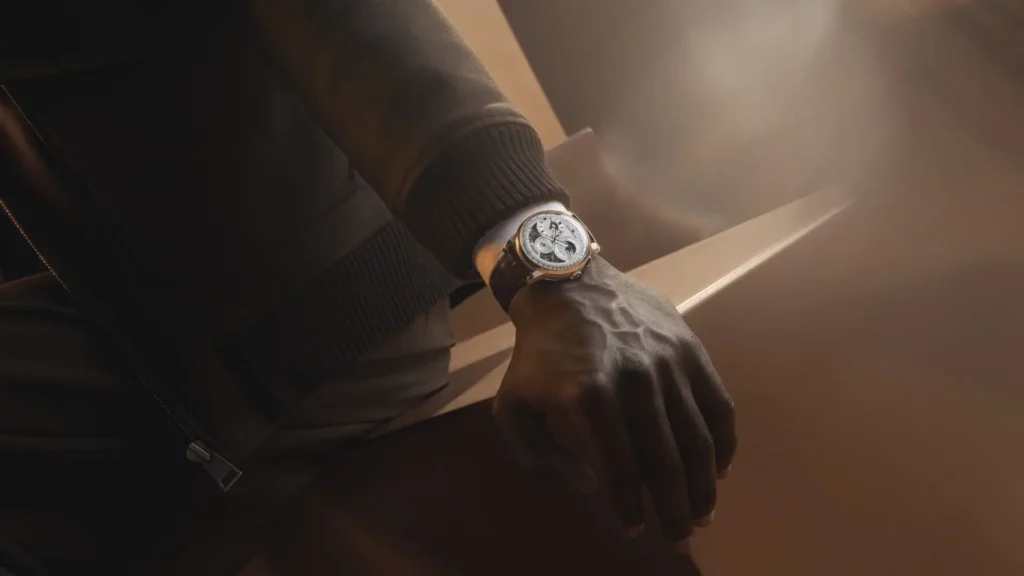
Turning the watch over reveals the stunning new caliber 391, which is an evolution of the 380 seen in the original Duometre, and the 381 which incorporated a moon phase and date complications. The new caliber is manually wound, affording a view of both barrels at the top, and two distinct trains emanating from them all the way down to the escapement where they meet. The integrated chronograph works are entirely visible along the perimeter between the bridgework. The scene is beautifully finished with Jaeger-LeCoultre’s hallmark sunray striping that emanates outward.

The newest iteration of the Jaeger-LeCoultre Duometre Chronograph is available for order now at boutiques, and is priced from $70,000 in pink gold, and $86,000 in platinum. Jaeger-LeCoultre

